Making tracks for a better future
November 25, 2014
Los Angeles’ subway is turning out to be the engine that could. A little more than 20 years after the first riders hopped aboard the first leg of the subterranean system, the network is getting ready to make tracks into the Westside, taking center stage in an unprecedented effort that will double Metro’s rail miles over the next two decades.
The Purple Line subway, which now runs from downtown only as far as Wilshire Boulevard and Western Avenue, will extend to La Cienega Boulevard by 2013, with stops at La Brea Avenue and the Los Angeles County Museum of Art, where officials recently held a ground-breaking ceremony to celebrate the coming of the line.
Funded in large part by Measure R—the half-cent sales tax approved by county voters in 2008—Los Angeles’ “rail-volution” heralds the region’s transition from smog-choked autopia to transit-friendly metropolis.
“It’s an amazing attitudinal shift,” said Art Leahy, Metro’s CEO. “Well into the 1980s people would say, as regards rail, ‘We don’t need that—this is not New York and it’s not Chicago.’ Well, you don’t hear that anymore.”
The Purple Line Extension is one of five major rail projects that are currently under construction, along with Phase 2 of the Expo Line, the Gold Line Foothill Extension, the Crenshaw/LAX Line and the Regional Connector. When fully built, the projects will add 37 miles of track and 30 stations, reaching destinations including Santa Monica, Little Tokyo, Beverly Hills, Azusa and Watts.
At the Los Angeles County Museum of Art groundbreaking ceremony, officials extolled the project’s benefits for transit riders and the community at large.
“It’s going to help people get where they need to go, cut traffic and boost our economy,” said Los Angeles Mayor Eric Garcetti. “Tens of thousands of jobs will be created because voters said, ‘We want to get this done.’ ”
Supervisor Zev Yaroslavsky called the occasion an “historic day for the Westside,” noting that the area has not seen mass transit for decades—since the demise of the fabled Red Car network. He also said that the traffic-plagued Wilshire corridor—home to popular destinations such as LACMA, the La Brea Tar Pits and UCLA—was the best place to get the most possible riders for the new line.
“It’s the densest corridor outside of downtown,” Yaroslavsky said. “I believe we’ll have over 100,000 people riding this line within a year of its opening.”
The Purple Line extension project is broken into three sections with a projected total price tag of $6.3 billion, from a mix of federal and local funds, including half from Measure R. When completed, riders will be able to get from downtown L.A. to Westwood in just 25 minutes. The first 3.9-mile segment of the subway, with stations at Wilshire/La Brea, Wilshire/Fairfax and Wilshire/La Cienega, is expected to be completed in 2023. The full extension will have additional stops at Rodeo Drive, Century City, UCLA and the Veterans Administration Hospital and is projected to wrap up in 2035.
The Westside doesn’t have to wait for the subway, however, to get its next rail infusion. Phase 2 of the Expo Line is on track for completion by the end of 2015. The line will bring trains to within blocks of the Pacific Ocean, ending at 4th Street and Colorado Avenue in Santa Monica and opening up transit options for millions of L.A. County visitors and residents. The beneficiaries will include Eastsiders like Metro’s Leahy, who lives in Pasadena. “I don’t go to the Westside often, even though I like the Westside, because it’s so hard to get around,” Leahy said. “It just takes forever to drive anywhere.”
The current rail expansion is the biggest of its kind anywhere in the United States, and transit advocates hope it will whet the public’s appetite for more. Plans for a new ballot measure that could fund additional projects are already in the works. While it’s too soon to predict what those plans will include, L.A.’s transportation makeover is already well underway.
L.A. County’s modern-day rail journey began in 1990 with the opening of the Blue Line, street level light rail that extends from downtown L.A. to Long Beach. Over the next decade, the Red and Purple subway lines opened in phases, connecting downtown to Koreatown, Hollywood and the San Fernando Valley. Meanwhile, the Green Line linked Norwalk and Redondo Beach in 1995. Additional lines have opened since then, including the Gold Line to Pasadena and, most recently, the first section of the Expo Line to Culver City in 2012.
Posted 11/25/14
Framing the future of L.A. art
November 14, 2014
It’s been dubbed L.A.’s living room, and the coming transformation of the Los Angeles County Museum of Art promises that, artistically speaking, we’ll be living large for generations to come.
LACMA embarked on an ambitious new course recently with the announcement of the largest art gift in its history from entertainment mogul A. Jerrold Perenchio, just a day after the county Board of Supervisors unanimously gave conceptual approval to a plan to help fund a dramatic new Wilshire Boulevard-spanning museum building by acclaimed architect Peter Zumthor.
Perenchio’s collection includes spectacular but until now rarely-seen works by a range of celebrated European artists, including Claude Monet, Pablo Picasso, Edgar Degas, Edouard Manet and René Magritte. The 47 works are to join LACMA’s collection following Perenchio’s death, but the public will have a chance to view some of them at a special exhibition next spring, when the museum celebrates its 50th anniversary.
The infusion of art and architecture comes as LACMA’s attendance is surging and the rest of Los Angeles County’s cultural landscape is enjoying exponential growth.
“What’s happening here at LACMA is really emblematic of what’s happening in arts and culture in Los Angeles County and the region,” Supervisor Zev Yaroslavsky said, ticking off a 15-year run that has included two new pavilions at LACMA, the opening of Walt Disney Concert Hall, extensive renovations to the county’s Natural History Museum and the Hollywood Bowl, establishment of the Colburn Conservatory of Music and the debut of a new Valley Performing Arts Center at Cal State Northridge, among other highlights.
“If we had just done one of them, or two of them, we would have called it a good decade and a half. But we’ve had all of them,” Yaroslavsky said.
There’s more in store. The Hollywood Bowl this winter will be finishing a series of inside-the-amphitheatre improvements that already have brought patrons amenities like LED screens, updated picnic furniture and new bench seats. The county’s Ford Amphitheatre has embarked on an ambitious overhaul to replace its stage, shore up and re-landscape its scenic hillside and create a striking new terrace dining-and-concession area. On LACMA’s west campus, a new movie museum is about to rise. And LA Opera has launched a new tradition of bringing free, live outdoor simulcasts to audiences outside the Civic Center.
Nowhere is the excitement more visible than at LACMA. Yaroslavsky has coined the term “L.A.’s living room” to describe the museum campus’ around-the-clock pull on visitors, who make themselves at home with activities ranging from outdoor summer jazz to school field trips to photo ops in front of Urban Light to early morning jogs under Levitated Mass.
“When you come here even at 6 in the morning, as I do from time to time, or at midnight, this place is humming,” Yaroslavsky said.
Since the arrival of director Michael Govan in 2006, the museum has made Chris Burden’s Urban Light a crowd-pleasing beacon along Wilshire, created a communal touchstone across Southern California with the rolling of the massive boulder at the heart of Michael Heizer’s Levitated Mass, and doubled its attendance to 1.2 million annually.
Now things are about to get really interesting.
The masterpieces in the Perenchio collection will make their permanent home in the new building being designed by Swiss architect Zumthor, winner of the 2009 Pritzker Prize.
If all goes as planned, the sinuously curved new building should be completed by 2023, just as the Purple Line subway extension reaches the museum as part of its westward march.
The trifecta of the new building, the masterworks from the Perenchio collection and the arrival of the subway promises to accelerate LACMA’s momentum well into the future.
“The museum has become a cultural force in the community, and the Zumthor building will carry it into the 21st Century and beyond,” Perenchio, 83, said at the news conference celebrating his gift to the county museum.
Perenchio, the former chairman and CEO of Univision, has made previous donations anonymously. He said he went public this time in hopes of spurring others to contribute artworks and money to LACMA as it prepares to build the new structure.
Under the plan unanimously approved by the Board of Supervisors, the county has agreed to provide $125 million for the new building, which would replace four aging structures on the museum’s campus. But under the agreement, LACMA’s board must raise $475 million in private funding to make the building a reality. Perenchio said he hoped his gift would “encourage all types of donations, large and small—hopefully more large than small.”
“We have to make the Peter Zumthor building a reality,” he said. “Failure’s not an option here. We’ve got to do it, for the city and everybody who lives here.”
Posted 11/14/14
At the ready for Ebola in L.A. County
October 17, 2014
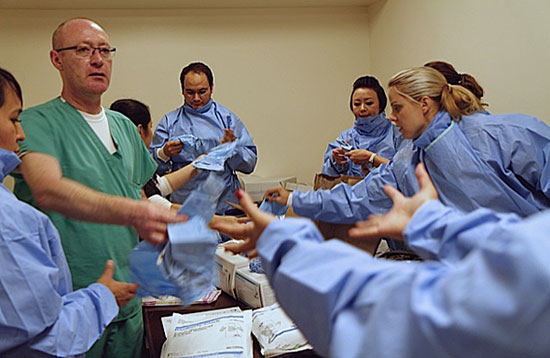
Nurses at LAC+USC hospital this week learn how to protect themselves from Ebola with protective gear.
When LAC+USC Medical Center handed out its latest batch of protective gear against the Ebola virus Wednesday, several emergency room nurses eagerly reached out with both hands.
There were impermeable gowns, scarves, booties, hair coverings, face shields, goggles and gloves – boxes and boxes of them. Still, the offered protections were not enough to ease the anxieties of at least a few of the nurses who’d gathered in the facility’s conference room.
After all, two members of their profession had, stunningly, contracted Ebola in a well-known Dallas hospital while extensively treating a patient who would succumb to the deadly disease.
One of the nurses at the LAC+USC training session, for example, worried whether the back of her neck was still exposed after she’d slipped on her blue gown. A tall, male nurse, meanwhile, wondered what might happen if his large feet tore through his protective booties.
Observing the session was nurse Jason Guzman, 33, who’d already been training for more than a week at the Los Angeles hospital, which is operated by the Department of Health Services. He understood the importance of those questions and concerns because before his training, he had them, too. For with Ebola, even the slightest wardrobe malfunction can lead to infection.
The training, he said, “helped me get more comfortable with the gear. It’s really boosted my confidence. It’s helped me feel a bit better about the situation.”
According to the World Health Organization, the current outbreak of Ebola Virus Disease has infected some 8,900 people, killing about 4,500 of them. That’s more than all other previous Ebola outbreaks combined. Among the casualties: 256 healthcare workers.
Although West Africa remains the epicenter of the disease, the patient in Dallas succumbed after a visit to Liberia, infecting two nurses who’d cared for him.
According to Los Angeles County’s interim health officer, Dr. Jeffrey Gunzenhauser, the nurses’ infections underscore the need for healthcare workers and others to take extreme precautions if they come into contact with a patient who may be contagious.
“I feel personally responsible for their safety,” he said.
Ebola, first discovered in 1976, can cause fatal hemorrhagic fever. A person can get sickened through direct contact with an infected person’s bodily fluids. The first symptom is fever, followed by headache, weakness, diarrhea and severe bleeding.
Gunzenhauser is concerned but calm, even unruffled. That may be because he’s not only a doctor but a retired Army colonel, whose resume includes graduation from West Point, medical training at Walter Reed Army Hospital and drafting health policies for soldiers deploying to the wars in Iraq and Afghanistan. He even learned to parachute out of planes, should that be the only way to reach wounded soldiers on the battlefield.
“Coming out of the military, I’m very accustomed to working in highly stressful operational environments and approaching problems with greatly detailed plans,” he said.
Last week, Gunzenhauser and other county leaders convened a task force to evaluate the response to Ebola if it were to reach Los Angeles. He knows that patients would need more than just medical care.
That’s why beyond medical, emergency and law enforcement agencies, the task force includes such departments as Children and Family Services, Mental Health and Public Social Services.
“Let’s say, for example, we might have a case where we would need to quarantine a family,” he said. “How are they going to get their food? What if they need medications? What if we’re pulling a kid out of school? We need to look at all those contingencies, and plan for them.”
If preparing for Ebola is like mounting a military campaign, then nurse Jason Guzman is among those on the front lines. He feels a “calling” to be a nurse, despite knowing that taking risks is “part of the job description.”
“Nurses are in the field to care for those who need help, and Ebola patients aren’t any different,” Guzman said. “They definitely need care — a little bit more care, perhaps.”
“I just know that if there’s a situation where there’s possibly a patient with Ebola, I’m going to do everything i can to help them,” Guzman said. “I’ll also definitely do everything I can to protect myself.”
Posted 10/17/14
Valley-Westside express bus is a go
October 1, 2014
Taking advantage of those brand-new 405 carpool lanes, Metro later this year will launch an express bus through the Sepulveda Pass, offering transit riders on both sides of the hill a speedier way through one of L.A.’s gnarliest commuting challenges.
On December 15, Line 788 will begin offering express nonstop service from UCLA in Westwood to the Orange Line in the San Fernando Valley. It then will continue north on Van Nuys Boulevard, stopping at major intersections on its way to Panorama City. Because it will connect to the Orange Line rapid transit busway, the line will give people in places like North Hollywood, Woodland Hills and Chatsworth a faster path to the Westside.
According to Jon Hillmer, Metro’s executive officer in charge of bus service planning and scheduling, the new line is projected to save a lot of time for commuters now riding other lines.
“We’re being very conservative, but from end to end we are looking at 20 minute time savings in each direction,” he said.
Service through the Sepulveda Pass currently is offered via Line 761, but the buses are infamously slow, having to navigate traffic and wait for stoplights along Sepulveda Boulevard. It currently takes more than an hour to get from one side of the hill to the other in normal traffic.
Initially, express buses will depart every 20 minutes on weekdays during peak traffic periods—from 5:30 a.m. to 9:30 a.m. and 3:30 p.m. to 7 p.m. Hillmer believes the line will draw a lot of riders in short order. If that’s the case, the frequency of buses will be increased and more daytime hours will be added. “If this gets to be very popular and we have overloads, we will add service very quickly,” Hillmer said.
The line could prove particularly useful for UCLA students, who qualify for reduced fares from Metro. The university also subsidizes at least 50% of transit costs with six local agencies for students and employees.
Using the 405 Project’s carpool lanes for buses was first suggested last fall at two Local Service Councils—appointed bodies that give Metro a regional perspective during the annual process of adjusting bus routes.
“The public was very supportive of the idea,” Hillmer said. “It was virtually unanimous that there was a need for nonstop service between the Valley and the Westside.”
Then Metro’s Board of Directors in May requested that the agency prepare the studies and tests needed to launch the service. One potential roadblock was whether buses could maintain highway speeds while climbing the steep hill that separates the Valley and the Westside. Fortunately, Hillmer said, Metro’s 45-foot coaches—which are built with lightweight composite sides—proved able to maintain speeds of at least 55 miles per hour in each direction.
Further down the road, Metro plans to extend the express line south to the Sepulveda station of the Expo Line when the final phase of the light rail project opens in January, 2016. That will give people another option to reach destinations such as Santa Monica without having to deal with driving, not to mention the city’s notoriously difficult parking.
Line 788 may soon get a catchier name. Today, at Metro’s Executive Management Committee meeting, Supervisor Zev Yaroslavsky and his Metro board colleagues Paul Krekorian and Pam O’Connor introduced a motion to begin promoting the line as the “Valley-Westside Express.” That proposal will go before the agency’s full Board of Directors next Thursday, September 25.
Whatever it’s called, Hillmer said the line will give residents of a broad area a new way to get from the Valley to the Westside—and vice versa.
“This will be a very attractive service because it’s fast and easy to use,” Hillmer said. “Because it interfaces easily with the Orange Line, people who have destinations on either side of the 405 will have faster access over the hill.”
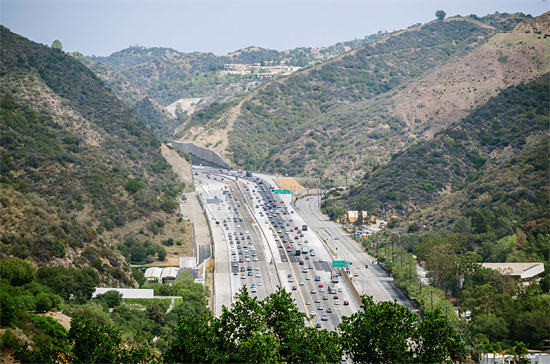
The bus line will roll though the Sepulvenda Pass via the new carpool lanes. Photo/Metro's The Source
Posted 9/18/14
Finding justice in the stacks
September 11, 2014

Martha Jimenez has used the Law Library to fight legal battles from L.A.'s eastside to Zacatecas, Mexico.
Perhaps no one knows how to use the Los Angeles County Law Library better than Martha Jimenez.
Since her college days at UCLA, the 45-year-old community activist has been taking advantage of the public facility in L.A.’s civic center to research an array of legal topics, from environmental regulations and landlord-tenant laws to city planning issues and Mexican civil procedure.
“This is like the international safe haven to address issues,” Jimenez said.
In the 1990s, she used the library to fight back when the Mexican government tried to take her grandparents’ house by eminent domain. Jimenez researched the relevant statutes and procedures and her family filed suit. In the end, they emerged victorious over the then-governor of Zacatecas.
“The governor did not know how to write his court document,” Jimenez said. “It was here that I learned that process.”
More recently, Jimenez used the library to protect her local community of City Terrace on the eastside from becoming a waste storage site for the City of Santa Clarita and a private trash hauler. After researching environmental regulations, she appealed to the City of L.A. and the Sanitation Districts of L.A. County. Again, she won.
“I empowered my community and collected 5,000 signatures,” Jimenez said. “We organized and said, ‘You cannot come into our community.’ And they stopped.”
Jimenez is one of an increasing number of self-represented litigants who’ve discovered the L.A. Law Library, said Sandra Levin, the library’s executive director. Since taking the position 19 months ago, Levin estimates that daily attendance has risen about 50%, from 200 to 300 people per day.
“I told my board that my goal is to come with a request to replace the carpet because we wore it out,” Levin said.
Hiring a lawyer simply isn’t an option for a growing segment of the population, Levin said. She and her librarians want to bridge the resulting gap in access to justice.
“There’s a real crisis right now in our society and our courts because many people are faced with legal issues and can’t afford representation. Most average citizens don’t know where to turn,” Levin said, adding that about 70% of litigants in family law cases now do not have attorneys “and the numbers are growing in basic civil cases, too.”
Over the past few years, the library has made significant upgrades, including a reorganized reference desk and computers, a renovated exterior and a new training center. “It looks totally different than before,” Levin said.
To improve outreach, Levin is offering classes and workshops taught by library staff, attorneys and nonprofit organizations. Topics include how to clear criminal records, researching with online legal databases, preparing for family law trials and how to file for a legal name change. All are provided free or for a small fee, ranging from $10 to $35.
Her reference staff handles the front lines, where people come in with all sorts of legal problems. Among the most common are evictions, divorces and child custody matters. Others, like the man who sued a boating company after being left out at sea for 12 hours, require digging a bit deeper into the public collection, the second largest in the United States after the Library of Congress.
Levin recalls two parents who came in because their child’s school wouldn’t allow them to visit during the day. “They wanted to see the school in operation and check on their child,” Levin said. “The librarians here helped them find the statute that says that you have a right to go into a public school to see your child.”
Ralph Stahlberg, the head reference librarian, remembers one homeless man who filed a lawsuit against the police for taking his belongings. “He came here and got resources,” Stahlberg said. “He fought it and won.”
Neel Agrawal is the research librarian in charge of the global law collection. He said small business owners often show up seeking assistance with the complex legal requirements regarding exporting products, trade routes and other concerns that large businesses typically hire law firms to handle.
Librarians direct their patrons to books written for non-lawyers or, if a visitor is more sophisticated, to more complex reference books. Still others need advice on the basics, like how to address a judge (“your honor,” rather than “sir” or “madam”.)
While unrepresented litigants have been on the rise, the trend was spotted by the State Bar of California back in 1997. In response, the California Commission on Access to Justice was created “to explore ways to improve access to civil justice for Californians living on low and moderate incomes.” Later, the Judicial Council of California—the state’s policymaking body for the courts—formed a Task Force on Self Represented Litigants. In 2004, the task force issued a Statewide Action Plan for Serving Self-Represented Litigants. Central to the plan was the creation of courthouse self-help centers to provide one-on-one assistance with family law and eviction cases.
Business is booming. According to Superior Court spokesperson Mary Hearn, more than 200,000 “incidents of service” have been provided annually during the past few years at centers across the county, including in Santa Monica, San Fernando and Van Nuys. The law library, meanwhile, collaborates with them to identify what kinds of services are most needed.
“The courthouses are wonderful but they have limited scope,” Levin said. “They offer a pretty wide range of family law issues and some landlord-tenant issues, but beyond that there isn’t much assistance.”
Nonprofit organizations like Public Counsel and Legal Aid Foundation of Los Angeles also help people who can’t afford an attorney, but still can’t meet the enormous demand.
The law library also serves people who aren’t facing litigation, as well as those who can afford an attorney. Understanding legal rights in advance can resolve or prevent costly court battles. Levin gives the example of a worker who believes she may have been sexually harassed, but isn’t sure. One hour of research at the library could prevent an unnecessary fight that might damage the person’s career interests.
“Someone has to teach people how to understand their rights, represent themselves in court and do legal research,” Levin said. “That’s what we do.”
Posted 8/14/14
From boot camp to home base
September 11, 2014
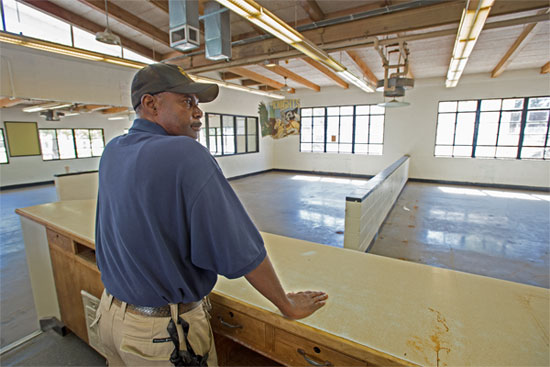
A probation official at the old central command center, where the camp's open dorms were supervised.
When bulldozers rumble into Camp Vernon Kilpatrick in Malibu, they will not only demolish an obsolete juvenile corrections facility but make way for an innovative approach to rehabilitating delinquent youths.
The Los Angeles County Probation Department is turning away from traditional methods that focused on control and punishment. Instead, it’s gradually adopting a model that emphasizes mentoring and a sense of community.
“It’s about building relationships and trust,” said Sean Porter, a director with the department’s Residential Treatment Services Bureau.
“There’s a saying: (the youths) won’t care what we think until they think we care about them,” Porter added. “The more time we spend with the youths, and convey compassion and genuine interest in them, the more they’ll listen to us.”
On Friday, probation officials, along with Supervisor Zev Yaroslavsky, will hold a ceremony to kick off the demolition of Camp Kilpatrick’s aging dormitories, classrooms and gym —only the kitchen and pool will be left intact — while plans for a modern facility are finalized. The project’s completion date is still to be determined.
Originally built as a barracks in 1962, Camp Kilpatrick had an institutional configuration, with bunk beds arranged in rows against cinderblock walls, exposed showers and toilets, and spaces designated for solitary confinement.
It was essentially a boot camp, and Porter believes such an approach tends to produce only short-term benefits
“It’s temporary,” he said. “Unless you change the way the youths think, you’re not going to change the way they behave.”
Probation Chief Jerry Powers is determined to reform the system by emulating some of the techniques used by Missouri’s Division of Youth Services.
The so-called Missouri Model puts youths in small groups with a more home-like—as opposed to jail-like—environment, supervised closely by supportive probation officers, social workers, teachers, psychologists and other professionals.
The approach has dramatically lowered juvenile recidivism rates in Missouri, and jurisdictions in New York, New Mexico, Washington D.C. and California’s Santa Clara County have created their own versions of it.
Powers’ $48-million vision for Camp Kilpatrick calls for tearing down the dilapidated dormitories and building cottages for “core groups” of 8-12 youths.
They would attend classes, eat meals, and engage in counseling sessions and other activities together. The cottages would be furnished with comfortable beds and other amenities, and have lots of natural light and fresh air.
In addition, there would be an on-site doctor’s clinic, daily nursing services and extended mental health clinician coverage—all unique to the Los Angeles Model.
Powers said the goal is to help the youths feel secure, while developing a sense of responsibility, accountability and community.
“Aligning the new facility with new treatment and educational approaches will translate to reduced recidivism, increased academic achievement, and better employment opportunities,” he wrote in a letter to the Board of Supervisors in May.
To date, the board has approved a $41-million budget for the project, about three-quarters of which has been raised through state grants.
Angela Chung, a policy associate with the nonprofit advocacy group Children’s Defense Fund, is excited about the proposed changes.
“I think this is a chance for Los Angeles to be ahead of the curve and move toward a more healing model,” she said.
Porter said if core groups are like a sports team—with their probation officer acting as their coach—Camp Kilpatrick already has a track record of success.
Its winning football team inspired the movie Gridiron Gang, with Porter portrayed by actor/wrestler Dwayne “The Rock” Johnson. Its basketball team almost won a regional championship, while the soccer program has produced a league MVP.
“We’ve used sports to teach self-discipline and the value of hard work, and to develop self-esteem,” Porter said.
“When the youths walked out of the camp and back into their communities, their shoulders weren’t slumped down and their head wasn’t hanging because they were able to accomplish something, and they knew they could do more.”
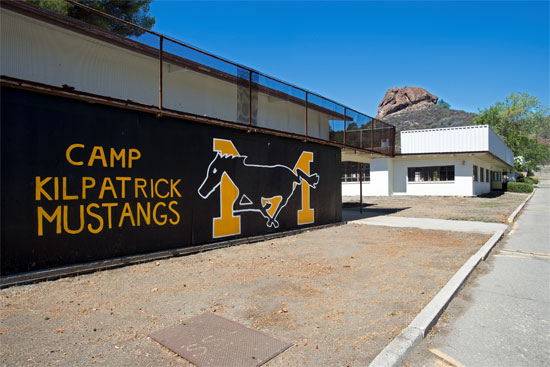
The vacant Camp Kilpatrick will be razed and replaced with a modern facility and a change of philosophy.
Posted 9/11/14
Shark bite opens debate
July 10, 2014
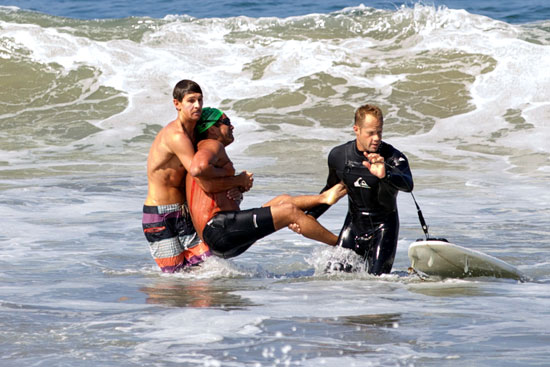
Steve Robles is pulled from the Manhattan Beach surf after his encounter with a snagged white shark.
The fisherman is off the hook. But his headline-grabbing behavior on the Manhattan Beach pier—when he snagged a young great white shark that thrashed and ended up biting a swimmer—is still churning up debate over how best to protect the beach-going public.
Manhattan Beach has quickly moved to ban all fishing from the pier for up to 60 days, although the California Department of Fish and Wildlife is weighing whether the city may have overstepped its authority on the state-owned pier. Meanwhile, Los Angeles County lifeguard officials have begun refining a new policy to create buffer zones between swimmers, surfers and the young sharks that increasingly are making Manhattan Beach their home before they head to deeper waters.
What’s more, officials now are being forced to confront an undercurrent of hostility that for years has strained relationships around the 94-year-old concrete pier, the oldest in California.
The sensational incident during the July 4th weekend—mistakenly characterized in early news reports as a shark attack—has exposed long-running complaints by surfers and swimmers that some pier fishermen have been endangering them. Among other things, they accuse fishermen of illegally “chumming”—dumping buckets of fish guts off the pier—to attract sharks.
“Tempers have been flaring,” said Los Angeles County Lifeguard Captain Kyle Daniels, who’s stationed in Manhattan Beach. “We do our best to separate the groups but it’s a dynamic situation. This goes back years.”
The Saturday incident brought it all to the surface, generating a wave of national news coverage and social media finger-pointing—most of it aimed at the fisherman and his friends, who were bombarded with allegations of animal cruelty and human indifference. The group was caught on video laughing and joking in the moments before they realized that a swimmer had been hurt by the distressed shark on the end of their high-gauge line. As of Thursday, the video had more than 1.4 million views.
According to witnesses, fisherman Jason Hagermann had been battling with the 7-footer for 45 minutes. The fish surfaced just as a group of distance swimmers passed while training for an upcoming pier-to-pier event. The victim, Steve Robles, can be heard on the video wailing as other swimmers rush to his rescue. Robles, a former L.A. County lifeguard himself, suffered serious but non-lethal gashes under his arm and along his side.

Juvenile great whites have been feeding in Manhattan Beach "like infants at an all-you-can-eat buffet."
Under state and federal law, it’s illegal to target great whites. If one gets hooked, then the line must be promptly cut. Hagermann told Fish and Wildlife investigators that he hadn’t been fishing for great whites and that he was afraid to cut the line while so many swimmers were nearby. With no evidence to contradict him, an agency spokeswoman said, no charges were filed.
Still, county lifeguard Daniels and others familiar with shark behavior insist the fish would never have bitten anyone had it not been fighting for its life. “If you lassoed and dragged a bear through a crowd,” he said, “I’m sure someone would get hurt.”
Daniels also said that the exceptionally strong wire-like line the fisherman was using posed a far greater danger to public safety than the juvenile shark. Had the fish quickly darted across and underneath the group of swimmers, “the line would have cut through to the bone.”
Laurie Jester, acting director of community development for Manhattan Beach, said the 60-day ban on pier fishing will give officials an opportunity to determine whether new restrictions should be imposed to avert these kinds of preventable risks.
“There’s a public safety concern with fishing on the pier,” she said, “and we want to make sure we’re covering all our bases, consulting with all the right people.”
The Los Angeles County Fire Department, which oversees lifeguard operations, has also moved in recent weeks to protect swimmers and surfers from potential harm.
Chief Daryl Osby said the department introduced a policy this summer to create “exclusionary zones” 300 yards into the water when sharks bigger than 8 feet are spotted because, unlike juveniles, these animals “can sometimes exhibit aggressive behavior, representing a public threat.” Osby said the department, in consultation with scientists at the Monterey Bay Aquarium, has developed a public education program “so beachgoers can become aware of the environment and habitat they’re about to enter.”
That habitat, scientists and others say, is increasingly a shared one, as rising numbers of young white sharks are taking up temporary residence at the popular El Porto surfing area, at Manhattan Beach’s northern end.
As a result, “the curious and the YouTube seekers” are boarding all sorts of crafts for a view of the sharks as they feast on the bay’s plentiful offerings, “like infants at an all-you-can-eat buffet,” said Manhattan Beach’s ex-mayor, Steve Napolitano, now a senior aide to Los Angeles County Supervisor Don Knabe, whose district includes the South Bay.
International big-wave rider Alex Gray, who’s also an avid fisherman, has been playing in the Manhattan Beach surf since he was a kid. He resents the human intrusions into the young white sharks’ habitat.
“Give the animals the respect they deserve and allow them to be at home,” he said the other day, as he looked out across the Pacific. “What if I walked into your house, took a picture of your family eating dinner and then walked out? Give respect, get respect. Just let them be.”
“I’ve traveled the world and I’ve never once had a bad encounter with a shark,” he added. “If I see a shark, I give it its area. I would never paddle up to it for a picture.”
Gray, 28, said the one thing that “breaks my heart” about the Manhattan Beach incident is that “kids might now be afraid to go into the ocean…I love this community more than anything. It hurts me when I see negativity that doesn’t need to be there.”
Posted 7/10/14
Metro’s park ‘n’ gripe problem
June 25, 2014
Angelenos cite lots of reasons for sticking with their cars rather than taking public transportation, but here’s one excuse that even Metro acknowledges can be valid:
Not being able to find a parking space at the station.
A new report by the transit agency found a dramatic parking space shortfall at the two Red Line subway stations in the San Fernando Valley, where customer demand is more than triple the supply. That means that thousands of commuters looking to ride the subway to Hollywood and downtown L.A. may be forced to stick with the congested freeways instead.
“If I’m already in my car and the lot is full, I don’t have any choice—I stay in my car and drive,” says Calvin Hollis, Metro’s planning manager in charge of parking. “I think that’s what’s happening.”
Overall, parking capacity at Metro’s rail stations and its Orange Line rapid transit busway is a mixed bag, the report found. The 11 busiest lots include the two at Red Line stations in the Valley, five on the Gold Line and three on the Blue Line—all of which are operating at 85% capacity or greater. At the other end of the spectrum are facilities like the lot at the Orange Line’s Sepulveda station, which is operating at only 8% of capacity.
The report measured “unconstrained demand,” transportation parlance for the number of cars that would park if there was unlimited space and no restrictions, as determined by a complex formula including socioeconomic data and passenger surveys.
At the North Hollywood station, those numbers add up to a whole lot of aggravation for drivers who might prefer to transfer to the subway, with unconstrained demand of 3,014 vehicles on an average weekday but only 951 available spots. The mathematics of parking also are bad at Universal City, where the demand is for 2,124 spaces per weekday with just 565 spots available, plus 281 more at adjacent county and state-owned lots.
There are plans to add 500 spaces in North Hollywood over the next two years, but that still won’t come close to meeting the demand. At Universal City, a lack of Metro-owned property means that few easy options are available in the short term. Existing lots can be reconfigured to squeeze in a few more slots, but that’s about it.
Hollis says Metro’s Board of Directors needs to decide whether to take more aggressive steps, which could include building parking structures or acquiring more land. Another option is working with private developers on projects that provide transit parking in addition to residential and commercial spaces. One such agreement was struck in 2007, but the real estate crash of 2008 forced the developer to back out. Now that the market has bounced back, Hollis says, Metro is preparing to revisit the option of joint development by issuing a new request for proposals.
The parking capacity report comes in response to a December motion by L.A. City Councilmember Paul Krekorian, Supervisor Zev Yaroslavsky and Mayor Eric Garcetti. The motion directed the agency to look at the frustrating situation at the Red Line stations, which serve as a transit gateway to Hollywood and downtown L.A for millions who live in the San Fernando Valley and places further north.
Metro also is reviewing the dynamics of parking throughout its entire rail system, which is expanding to more communities with projects like Expo Line Phase 2, the Gold Line Foothill Extension and Crenshaw/LAX. The first phase of the Expo Line, which extends from downtown L.A. to Culver City, is already feeling the crunch.
“The Culver City lot is at capacity, so I think we are going to have the same situation that we have at North Hollywood,” Hollis says.
Aside from availability, the agency also may need to revisit its policy on selling reserved spaces at busy lots, Hollis says. While the practice generates some revenue that can be used to build more spaces, it also decreases the number of cars that can park during rush hour. “We are reserving spaces that don’t get used during the peak time and they sit there empty,” Hollis says.
Hollis will present his findings to the agency’s Board of Directors in July. He’s also recruiting Metro’s first director of parking—someone with substantial experience managing large systems.
Metro currently has more than 10,000 spaces, but now is in the process of acquiring 42 state-owned lots with a total of 12,000 spaces. (None of which, unfortunately, will be going toward alleviating the shortage at the two Valley subway stations.) Additional new spaces will be coming into the system as Metro’s rail network expands in the years to come. It all adds up to a lot of territory, and issues, for a new parking czar to oversee.
“We have to realize we are in the parking business,” Hollis says. “We’re going to have about 30,000 parking spaces. It’s time to get serious about it.”

It's also tough to find a parking space at the Expo Line's Culver City station. Photo/Streetsblog LA
Posted 6/25/14
A stowaway on Expo 2
June 18, 2014
I had a chance to ride the rails last week, going behind the scenes of one of L.A.’s most eagerly anticipated transit projects.
The vehicle transporting me was a bouncing truck, not a sleek light rail train. But my imagination was moving full speed ahead as I traveled a major chunk of the Expo Line Phase 2 route now taking shape beside the 10 Freeway. (I even shot some iPhone footage along the way. I’m probably not going to be winning any cinematography Oscars, but I hope you’ll click on the above link to share a condensed and accelerated video version of my off-road voyage.)
When completed next year, and opened to the traveling public in 2016, Expo will be an urban transportation godsend: a chance to bring some predictability and personal choice back to what’s become, over the past decade, the increasingly soul-crushing experience of just trying to get across town.
I was moved—and not only in the literal sense—to see all the years of hard work, planning and construction transforming into something so real and so powerful. The long-held dream of being able to make it from downtown L.A. to 4th Street in Santa Monica in 46 minutes flat is now emerging fast from steel, sweat and stone.
I saw stations rising in Palms and at Westwood Boulevard. Long stretches of sound walls were already in place. About four miles of track have been installed, with 10 additional miles coming soon to complete the roundtrip journey of Expo Phase 2 from Culver City to Santa Monica.
On the morning of my off-road tour, from Bagley Avenue to Military Avenue in West Los Angeles, electrical crews were racing their construction counterparts to put up the network of power poles that will move Expo’s trains. Knots of workers were busily installing pavers on the platform of the Westwood Boulevard station. Elevator towers were up at the Palms Station, ready for the contractor to install glass and machinery. And heavy, laser-equipped machines were preparing to tamp down rock ballast between rail ties.
It was a fascinating trip into L.A.’s past, present and future. We traveled past the modern Lycée Français de Los Angeles; past an area known as Motor Yard where generations of taggers, unfortunately, have left an inch-thick residue of graffiti for our teams to clean up; through an old freight train tunnel under the 10 Freeway that will soon see a new generation of trains gliding through.
To our right, for some of the trip, rumbled the 10 Freeway—moving uncharacteristically smoothly on this morning but inevitably heading toward the gridlock that will be the Expo Line’s best advertisement when Phase 2 opens. As we passed the Westwood Boulevard station, another symbol of motoring frustration, the 405 Freeway, was visible to the west.
It was an amazing vantage point, and I wish that every Angeleno who’s ever cursed a Sig Alert could have been along for the ride. Short of that, I hope that the video above will spur your imagination and awaken the sense that something better is coming down the tracks for Los Angeles.
Posted 6/18/14




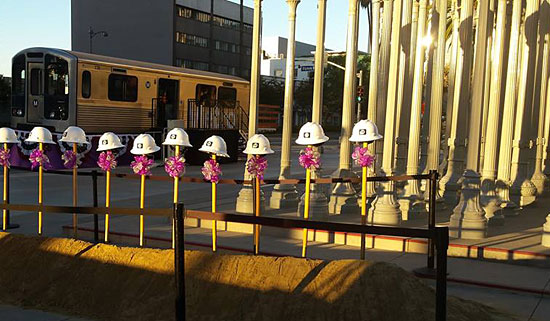

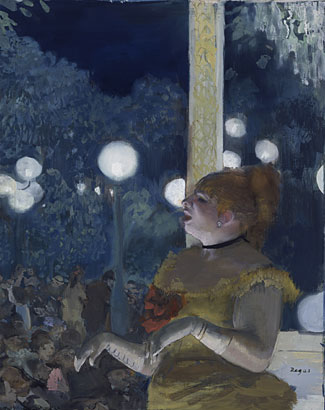


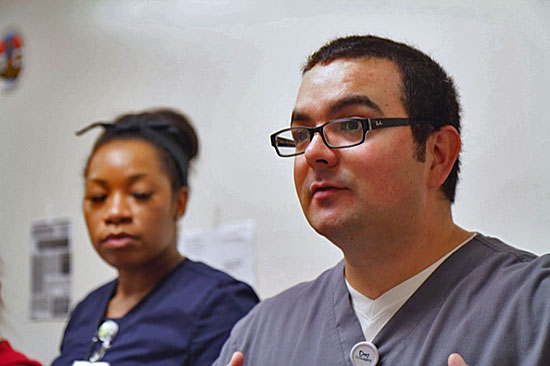
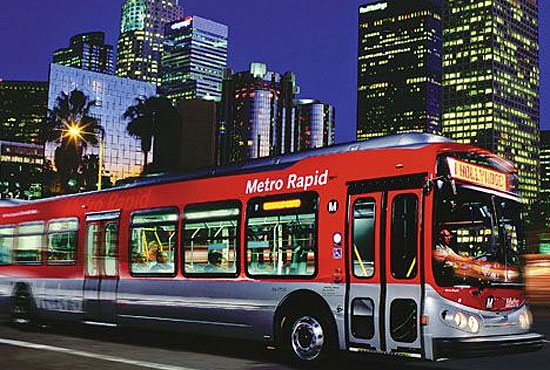
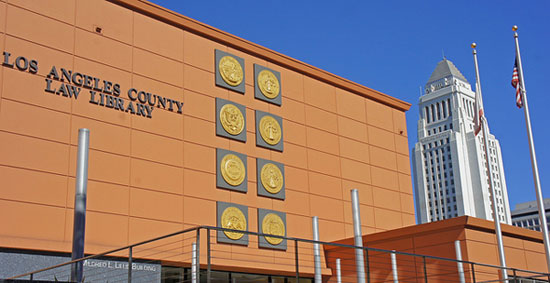
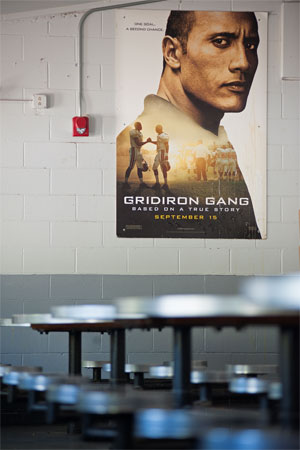
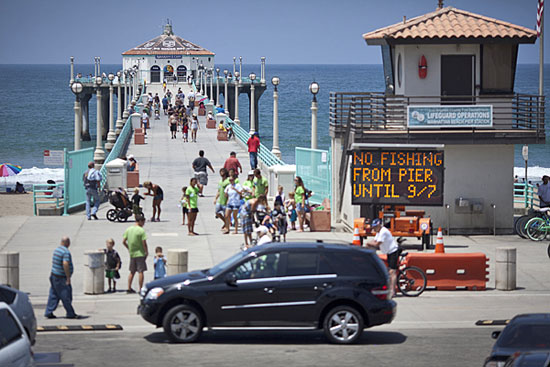
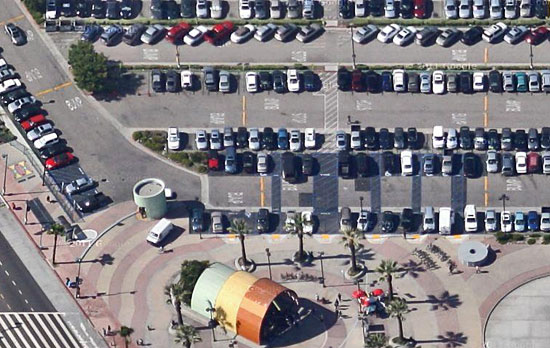








 405 bridge work causes a stink
405 bridge work causes a stink

